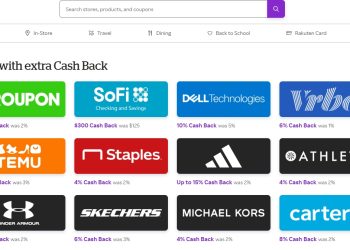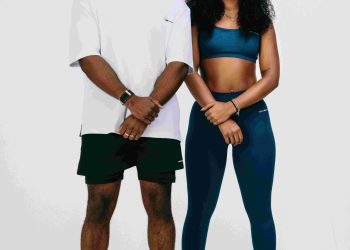How Influencers Impact Marketing Campaigns
“The power of a single voice in today’s digital landscape is unparalleled, shaping perceptions, driving behavior, and, quite often, redefining industries.”
Just a few years ago, I bought a skincare product not because I had seen it in a glossy magazine spread or in a high-budget commercial, but because a lifestyle influencer I followed on Instagram swore by it. It wasn’t the company that had earned my trust—it was her. She wasn’t a celebrity, per se, but her candor, relatability, and authenticity drew me in. That moment altered my perspective on marketing forever: I realized that a human connection could outweigh any marketing budget.
Human Connection in a Sea of Digital Noise
Traditional marketing often relies on the scale and reach of mediums like TV, print, and radio. However, the explosion of social media has democratized influence, giving individuals with loyal followings unprecedented power. In many ways, influencers act as curators for our overly saturated digital lives. They guide their audiences through a maze of products, services, and trends, often making sense of it all in relatable and digestible ways.
Psychology plays a significant role here. Robert Cialdini’s principles of persuasion, particularly the concept of ‘liking’, demonstrate why influencers perform so well. When audiences see influencers as trustworthy, likable, and similar to themselves, their recommendations feel less like advertising and more like advice from a friend. Traditional ads often fail to replicate this personal bond.
The Shift from Mass to Micro
Marketing campaigns have historically been about casting the widest net possible. But influencers have challenged this approach by trusting in the power of niches. Micro-influencers, those with audiences between 10,000 and 100,000 followers, often see engagement rates much higher than traditional celebrity influencers. Why? Their smaller followings feel closer to a community than a fanbase. These creators know their audience’s aspirations, pain points, and inside jokes, fostering a sense of inclusivity that can lead to impressive campaign results.
Take, for example, the intersection of technology and fitness. A fitness influencer on YouTube who specializes in smartwatches has a fraction of the following of global fitness icons but can generate better conversion rates in that specific niche. This hyper-targeted approach ensures that every marketing dollar is spent on people who are more likely to care—and act.
The Ethics of Influence
However, with great influence comes great responsibility. Transparency is critical in influencer marketing, and the Federal Trade Commission (FTC) in the United States mandates that paid endorsements be disclosed. But morality goes beyond legal compliance. Audiences are becoming more savvy, and overtly promotional content can erode trust. Influencers who fail to maintain authenticity often fade as quickly as they rose.
Some psychologists suggest that influencers mirror parasocial relationships—a one-sided bond where an audience feels deeply connected to someone who doesn’t know they exist. While this can amplify trust, it also accentuates the ethical dilemma influencers face. Are they genuinely recommending products, or are they prioritizing brand partnerships over their audience’s best interests?
Challenging the Norm
Brands have long measured their success via sales and clicks, but working with influencers offers something less tangible yet equally valuable: cultural relevance. Traditional ads rarely go viral in the same way that memes, challenges, or dances introduced by influencers can. The Adidas ‘Prouder’ campaign with multi-hyphenate activists and creators like Pharrell Williams and niche influencers alike showcased exactly this – selling an idea of inclusion rather than just sneakers.
However, this raises a point to ponder: should brands lean too heavily on influencers, risking reliance? Strategic partnerships work best when the brand and influencer have equal weight in the relationship, crafting campaigns that are mutually enriching.
Future Trends on the Horizon
The landscape of influencer marketing is shifting rapidly. Technologies like artificial intelligence (AI) and augmented reality (AR) are likely to further expand an influencer’s toolkit. Imagine influencers hosting live AR makeup tutorials where followers can try on products in real-time via their phones. AI-driven analytics will also enable brands to identify potential influencer partnerships based not just on follower count but on deeper engagement metrics and audience psychographics.
Moreover, the rise of virtual influencers—digital personalities created with advanced rendering technologies—is a development that deserves attention. Unlike their human counterparts, these entities are immune to scandals or controversies and can work tirelessly around the clock. However, one must wonder: will audiences continue to resonate emotionally with something not inherently human?
Practical Steps to Leverage Influencer Impact
-
Define Clear Objectives:
Understand whether your focus is on brand awareness, sales, or community engagement before you approach influencers. -
Vet for Compatibility:
Look beyond follower count. Ensure their values, content style, and audience align with your brand identity. -
Foster Authentic Relationships:
Long-term collaboration often proves more effective than one-off campaigns. Build rapport and trust with influencers to create seamless integrations. -
Embrace Data:
Always measure campaign success using meaningful KPIs like engagement rates, conversions, and ROI. -
Promote Transparency:
Encourage influencers to disclose partnerships openly, preserving trust among their audience.
Why This Matters
Much like Gutenberg’s printing press democratized knowledge, the influencer era has democratized persuasion. We no longer have to look solely to huge corporate entities to inform our decisions; the individual voice can now carry immense power. This also means the balance of power has shifted, especially for brands willing to adapt.
In the end, the art of influencer marketing is about more than just selling; it’s about storytelling in a deeply human way, driven by empathy, creativity, and an understanding of our ever-evolving social fabric. That, perhaps, is the greatest lesson for marketers—and for us all.












